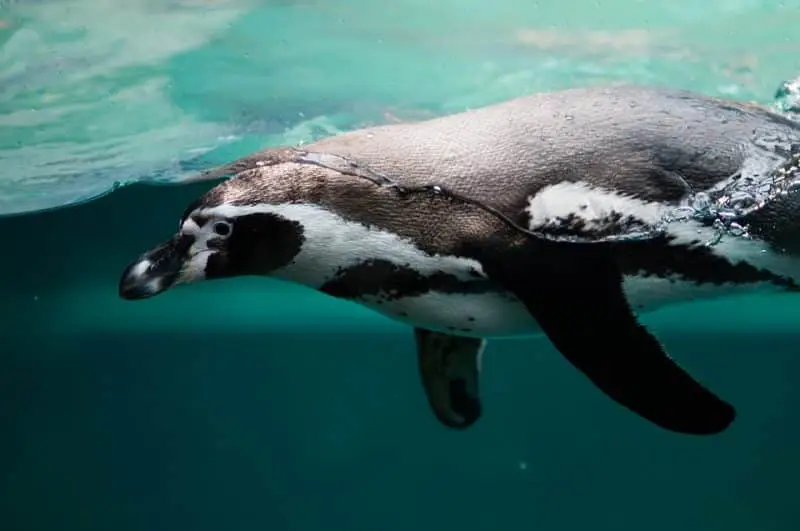Penguins are a group of aquatic flightless birds. They live almost exclusively in the Southern Hemisphere, with only one species, the Galápagos penguin, found north of the equator. Highly adapted for life in the water, penguins have countershaded dark and white plumage and flippers for swimming.
About
| Aspect | Information |
|---|---|
| Scientific Classification | Kingdom: Animalia Phylum: Chordata Class: Aves Order: Sphenisciformes Family: Spheniscidae |
| Physical Characteristics | – Size: Varies by species, from around 30 cm (12 inches) to 122 cm (48 inches) – Weight: Varies by species, from around 1 kg (2.2 lbs) to 45 kg (99 lbs) – Color: Black and white plumage, with variations in head, beak, or throat colors |
| Habitat | Mostly in the Southern Hemisphere, around Antarctica. Some species found in temperate regions, like the Galápagos Penguin. |
| Diet | Carnivorous, mainly feeding on fish, squid, and krill. Diet varies by species and habitat. |
| Breeding and Reproduction | – Lay one to two eggs, varies by species – Both parents incubate eggs and care for chicks after hatching |
| Lifespan | Varies by species and influenced by factors like predation, environment, and human impact. Generally, 15 to 30 years in the wild, longer in captivity. |
| Conservation Status | Some species are listed as endangered or vulnerable due to threats like climate change, habitat destruction, pollution, and overfishing. |
Habitat
Penguins are flightless seabirds that live almost exclusively below the equator. Some island-dwellers can be found in warmer climates, but most—including emperor, adélie, chinstrap, and gentoo penguins—reside in and around icy Antarctica.
Behavior & Breeding
On land, penguins have an upright stance and tend to waddle, hop, or run with their bodies angled forward. Polar penguins can travel long distances quickly by “tobogganing,” or sliding across the ice on their bellies and pushing forward with their feet. If it’s especially cold, they huddle together in large colonies that protect them from predators and provide warmth.
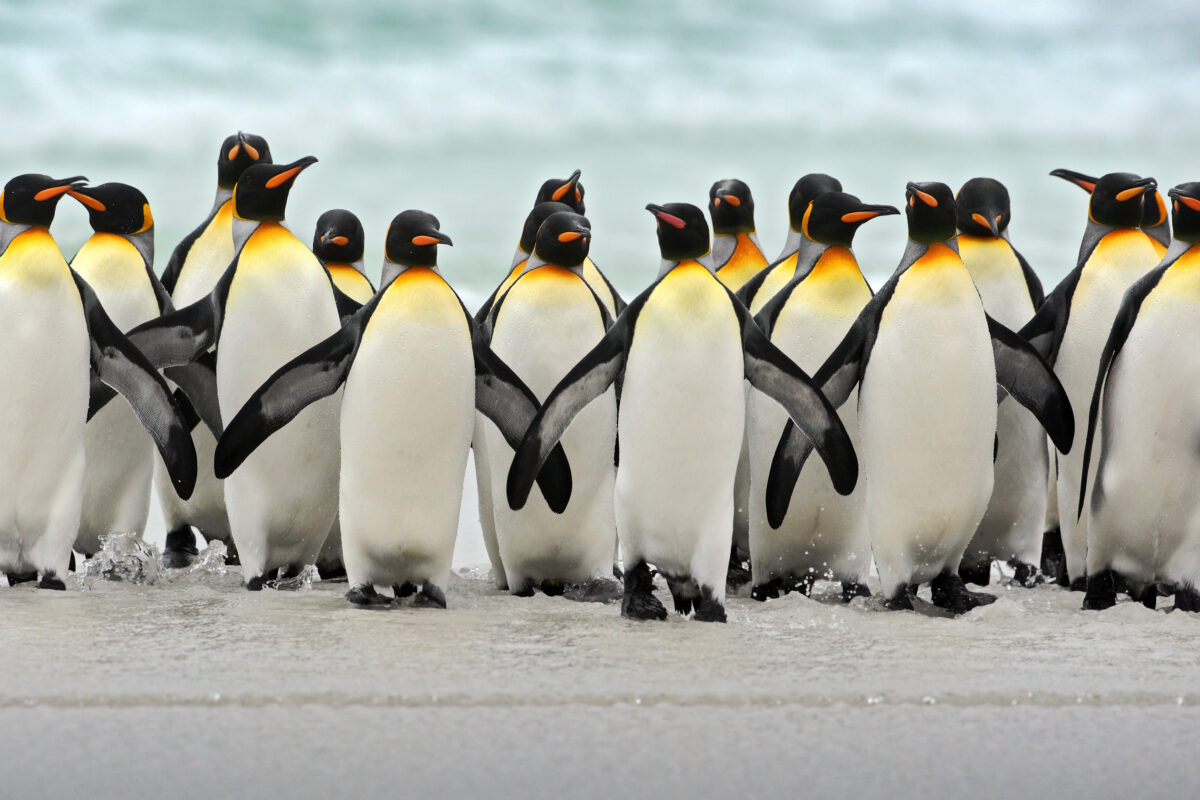
Penguins come ashore to lay their eggs and raise their chicks. Most penguins stay with their mate for many years and lay only one or two eggs at a time. Parents take turns keeping their eggs warm, and when they hatch, feeding and protecting the chicks. For a few weeks each year, thousands of baby birds wait together while their parents forage for food. When mother and father return, chicks wait for unique audio frequency of their parents’ call, allowing them to reunite in a large, noisy crowd.
Soon after the chicks fledge, parents will begin malting. Unlike some birds that shed a few feathers at a time, penguins lose all their feathers at once during a process called catastrophic malt. They condense this process to just a few weeks because they must fast during this time—they can’t hunt without their waterproof feathers.
Conservation
About two-thirds of penguin species are listed as threatened on the IUCN Red List, making them one of the most endangered seabirds. Loss of habitat, disease, and infectious diseases spread by tourists loom as threats.
Commercial fishing in the Southern Ocean is also a significant concern, as it has reduced fish supply by about half in the Antarctic Peninsula. This forces many penguins to compete for food, and puts them in danger of getting accidentally captured by fishing nets.
Fun Facts
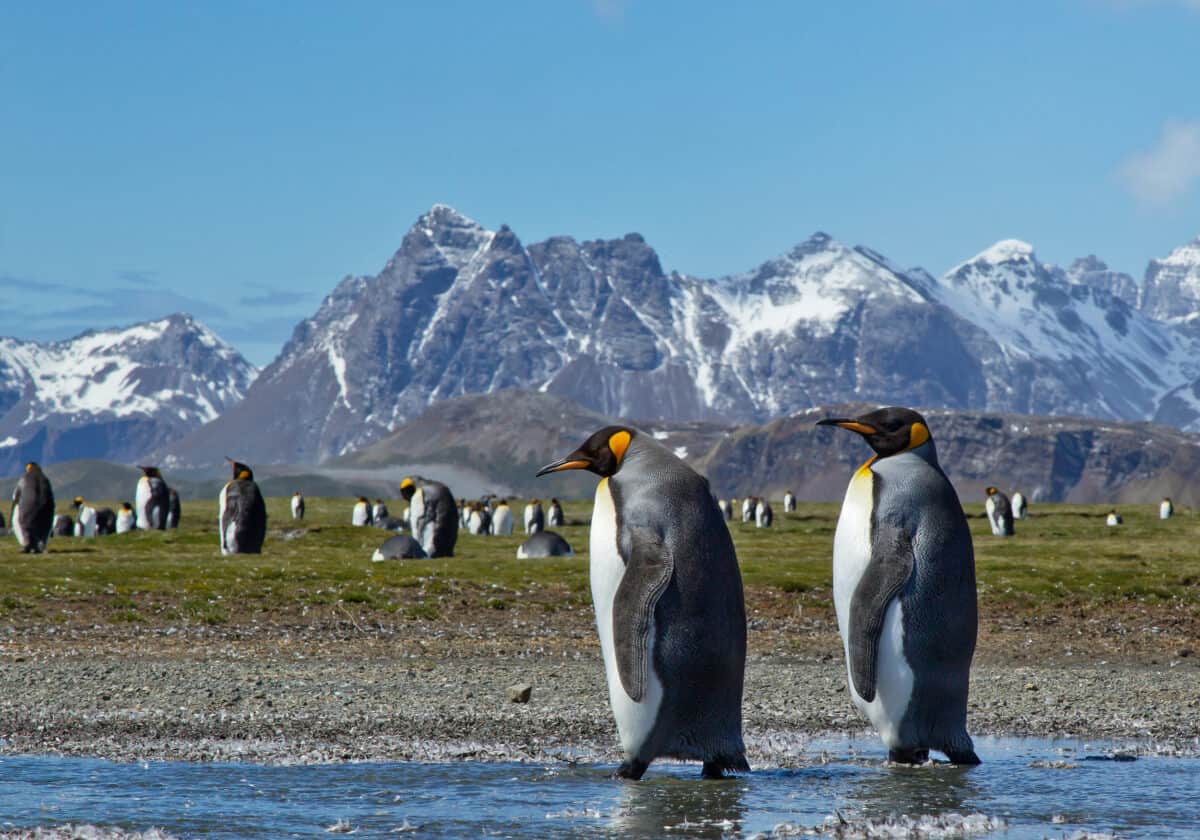
#1 Feathery coat
Many penguins have a tuxedo coat of a dark back and white under belly. These colors help them to self regulate their temperatures underwater and to camouflaged when needed.
#2 Smart walkers
The way penguins waddle from side to side allows them to conserve up to 80% of their energy for more tiresome activities, making their form of upright walking more efficient than the method of humans. Should we take a lesson from the penguins?
#3 Eyesight underwater
Penguins have flattened corneas which does not distort clarity in underwater vision the way human’s eyes do. They also have a handy extra translucent eyelid which protects the eye from the salt water so many penguins can see perfectly underwater without an issue.
#4 Conversational Skills
Penguins can locate one another by listening to exact pitch frequencies. each penguin has a different pitch to be identified by.
#5 Most adorable “Charismatic megafauna”
These animals certainly have the ‘cute factor. This is actually known as the “Charismatic megafauna” which speaks to the likeability and subsequent funding for more ” adorable” looking animals. The good news though, is that conservation funding for cuter animals will also help to conserve the habitats of the not-so-cute marine life.
#6 Relationships
Many penguins mate for life and are loyal to their partners even after separation.
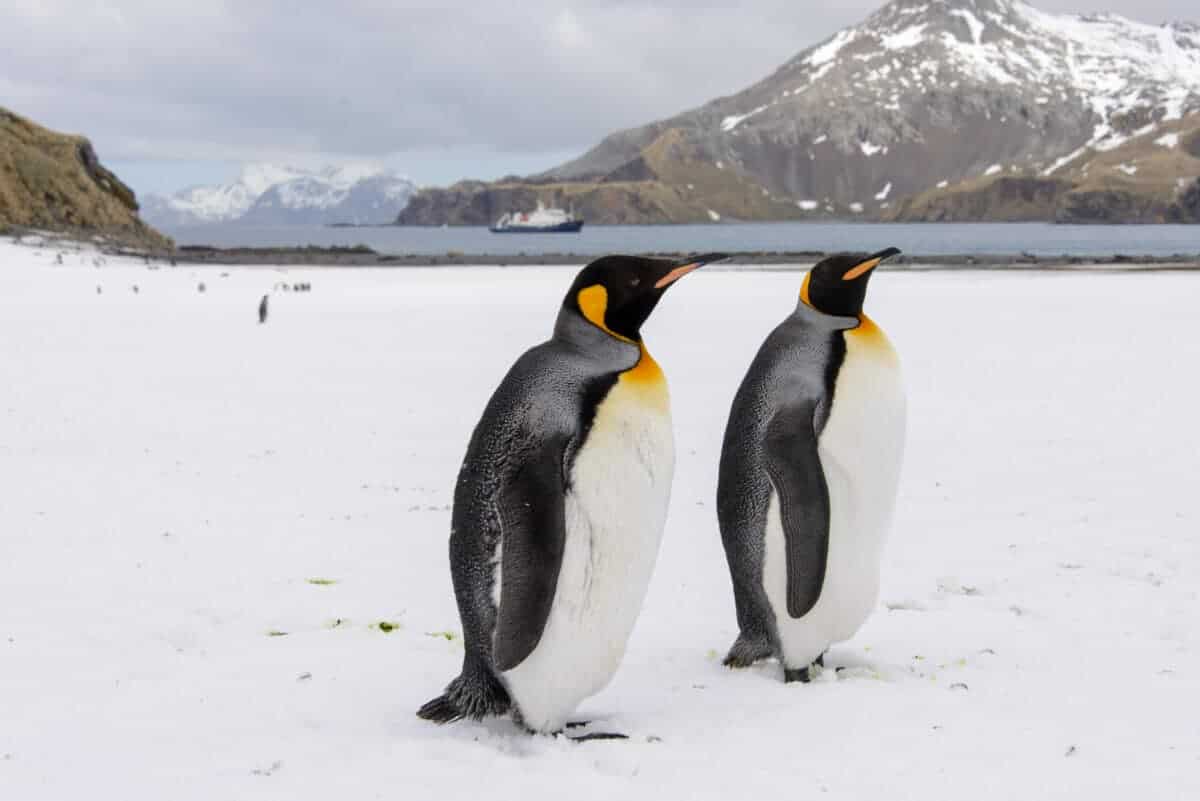
#7 Array of colour sight
Penguins have extra cellular cones at the back of their eyes that allow them to see UV light rays, meaning they have a whole array of extra colors to enjoy.
#8 Sneaky critters
They have adapted to be quite resourceful in sneakily switching and stealing foraged items for nest building.
#9 Parental instincts
Many parents share their baby sitting responsibilities , incubating the egg or supporting their partner by taking on meal preparation duty/ hunting or guarding their partner and egg. Most precious of all, after the hatching o the chickling, many parents group their babies together in a way of protecting them and lessoning the responsibility of the parents who take turns in their babysitting duty. Penguins are active protectors of their young juveniles until they are about 4 months old and able to forage for themselves.
#10 Drinking sea water
Penguins are actually able to filter the salt out of salt water for drinking purposes because of their rare subordital gland. Any salt is sneezed out of their nose.
Types of Penguins
The official number of Penguin types can be disputed but data collection suggests 26 species exist. Of which we will cover the most well known and visited penguins:
#1 The African Penguin: (South Africa & Namibia)
African penguins (Spheniscus demersus) are the only species of penguin native to Africa, living only in South Africa and Namibia.
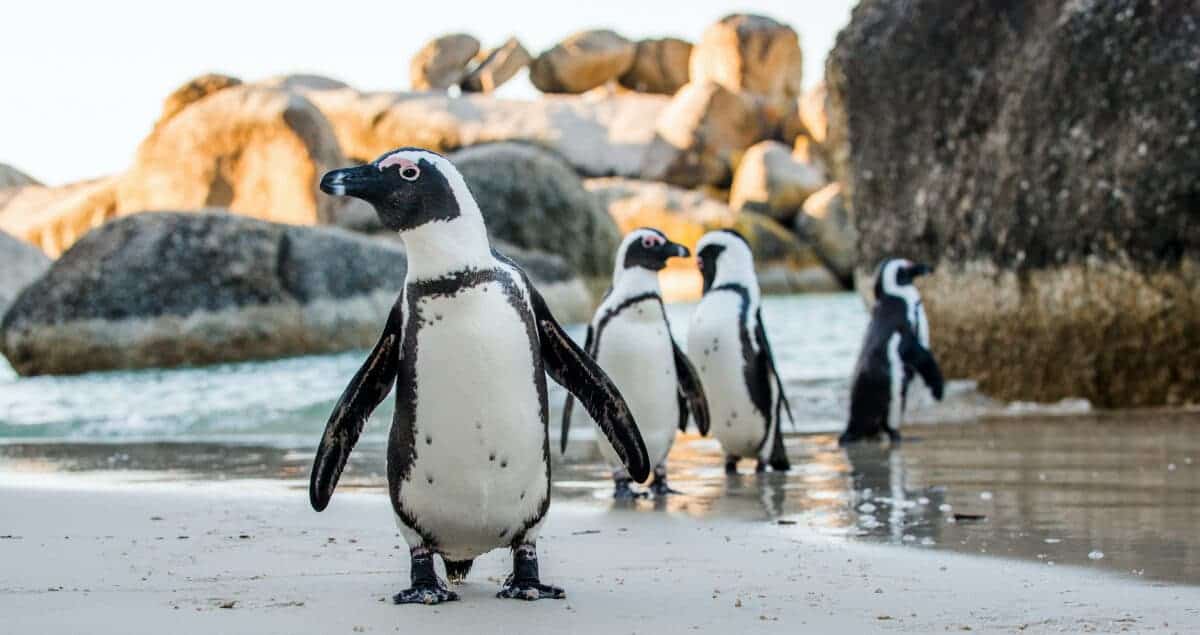
African Penguins used to be known as ‘Jackass’ Penguins due to their distinctive donkey-like bray. However, three other species of penguin have similar calls, and to avoid confusion this species, which is only found on the continent, is now officially known as the African Penguin. It’s also a little more accurate a description of a wonderful creature that is far more than it’s quirky vocal tones.
#2 The Northern Rockhopper Penguin (South Atlantic and Indian Ocean)
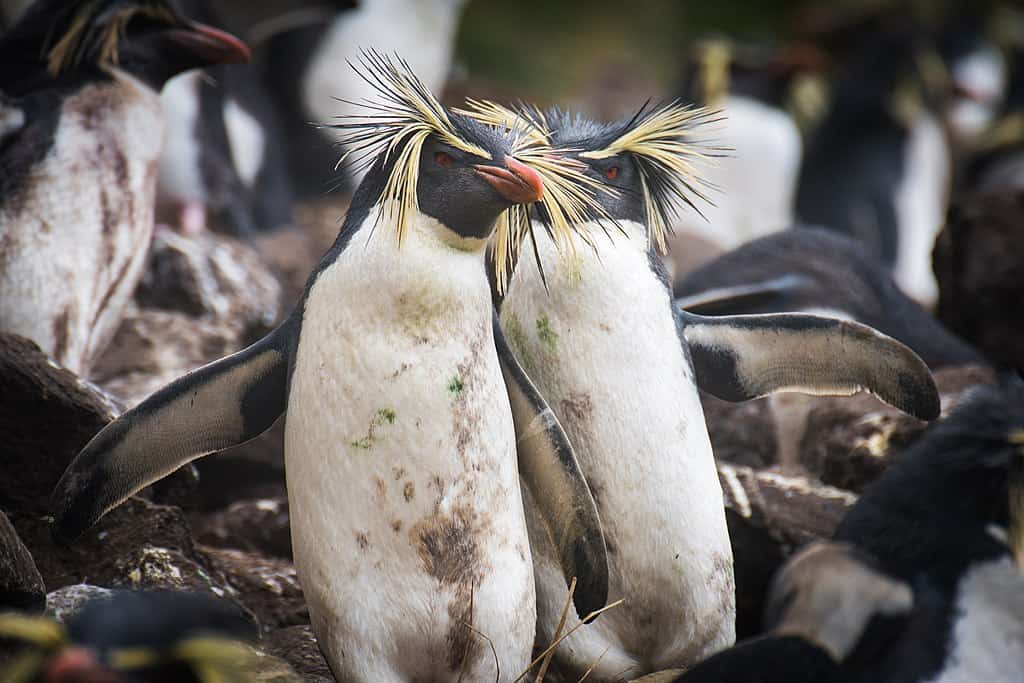
Northern rockhoppers (Eudyptes moseleyi) are native to Tristan da Cunha and Gough Island. Their breeding range is restricted to only seven islands within this area.
Inhabiting naturally uninhabited islands, these little birds have little fear of humans and treat us with curiosity – all they want is your love and respect. Rockhopper penguins are so named because they hop up and down steep slopes to go to their nests.Penguins that are too young to have chicks hang around and get in the way at the rookery. They are called “hoodlums”.
#3 The King Penguin (Falkland Islands)
King penguins (Aptenodytes patagonicus patagonicus) are native to the frozen and cold islands of the southern Atlantic Ocean, particularly the Falkland Islands.
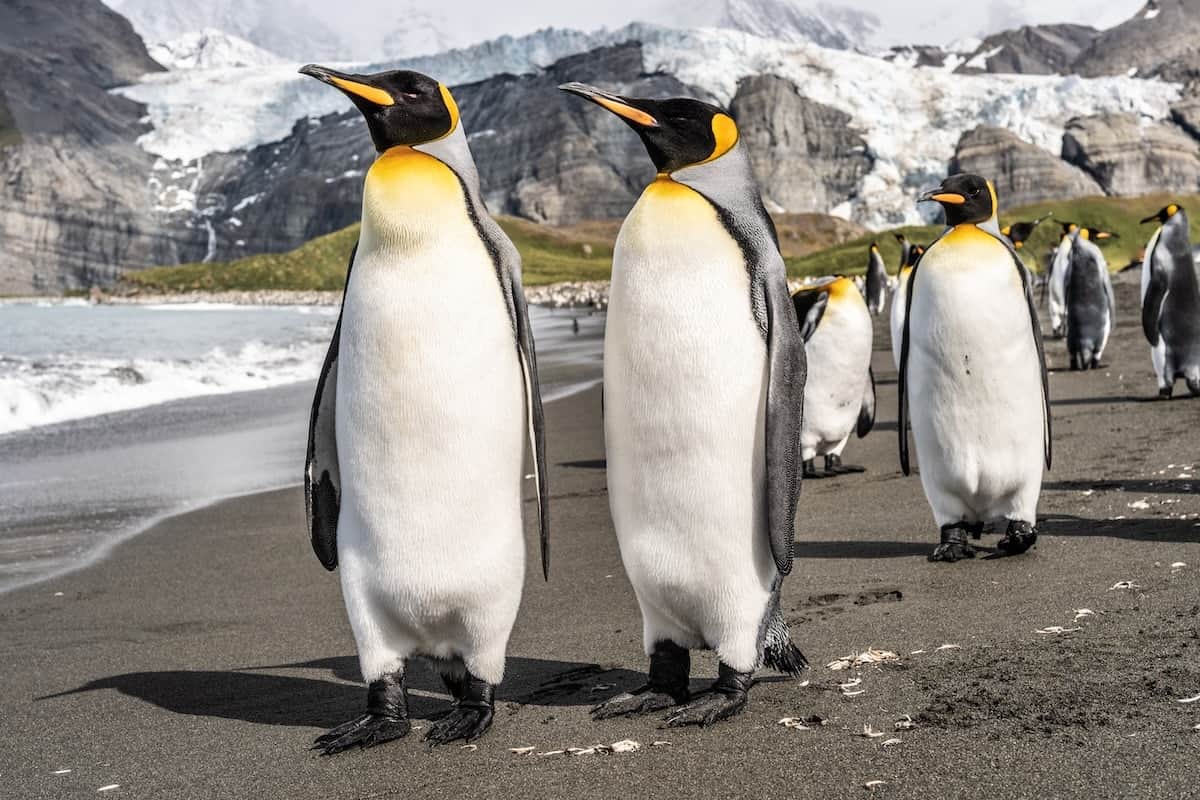
These penguins are stunningly beautiful, but their fuzzy brown chicks may just be the ugly ducklings of all penguins. These majestic birds are the second largest penguin species. King Penguins form gigantic colonies when they come in to shore during the mating season. One colony at South Georgian Island is estimated to have over 200,000 birds.
A conservative estimate puts the worldwide King Penguin population at 2.2 million breeding pairs.
#4 The Adelie Penguin (Antarctic)
For many people, Adélie penguins (Pygoscelis adeliae) are the cutest species, but did you know that these Antarctic predators are one of the region’s most fierce hunters. They’ve been known to take on potential predators – seals or large seabirds – or even attack visiting researchers with their flippers. Slap! The Adélie penguin got it’s name from the French Antarctic explorer, Jules Dumont d’Urville. On discovering these sea birds in 1840 he decided to name them after his beloved wife – Adéle.
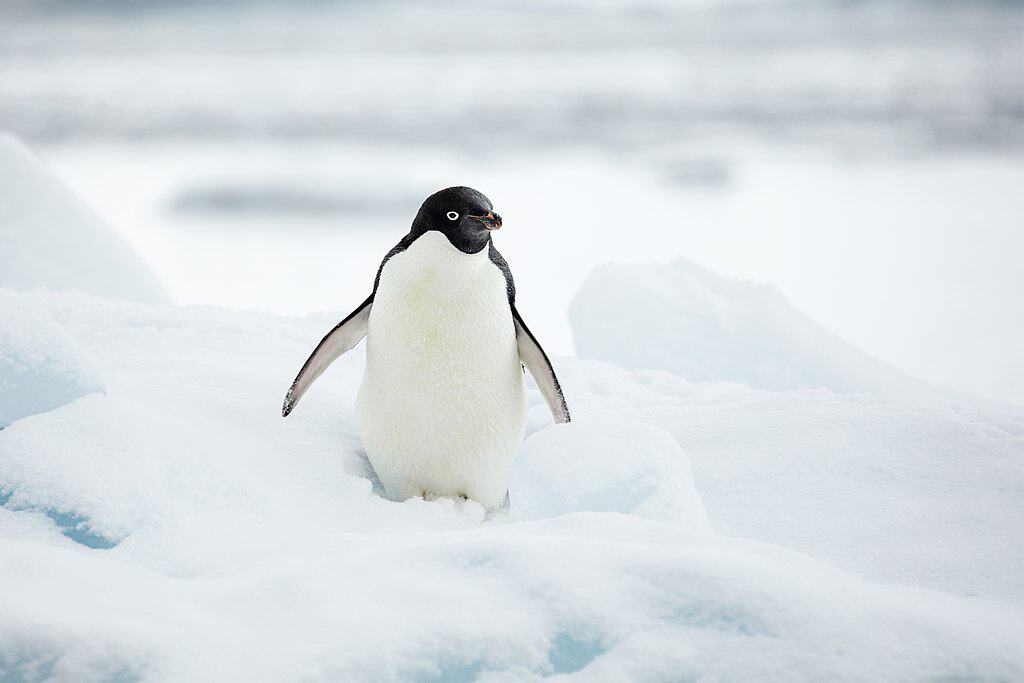
Adélies can hold their breath for up to six minutes and frequently reach depths of 150 m. However, they can dive deeper. The deepest recorded dive by an Adélie penguin is 180m. Unfortunately, climate change is affecting their food source and thousands of their chicks starve every year. in the Antarctic Peninsula where Adélie and Gentoo penguins breed together, gentoos are thriving in the warmer temperatures and lower sea-ice conditions resulting from climate change, and may out-compete Adélie penguins as the climate changes further.
#5 The Little (Fairy) Penguin (Australia & New Zealand)
Fairy penguins (Eudyptula minor minor), also known as southern little penguins, inhabit the western and southeastern coasts of the southern island of New Zealand.
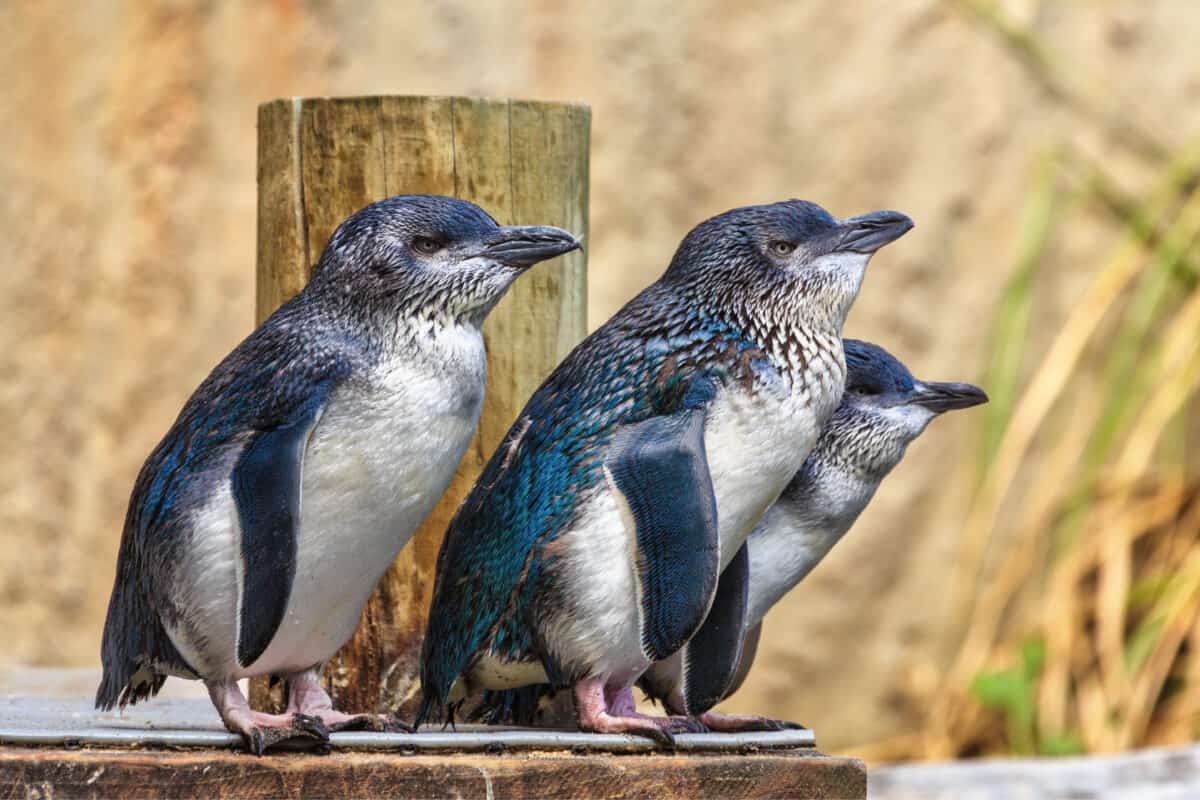
Fairy penguins and other little penguin subspecies are the smallest penguins on the planet, and the only ones with blue eyes and feathers. They stand approximately 33cm tall and weigh around one kilogram, with males weighing slightly more than females. Little penguins breed in colonies along the southern coastlines of Australia and New Zealand, with Phillip Island in Victoria home to an estimated 32,000 breeding adults.
Little penguins spend 80% of their lives at sea swimming and foraging for food, and return to their nesting burrows on Phillip Island to breed, raise chicks, moult.
#6 The Macaroni Penguin (Across Southern Oceans)
Macaroni penguins (Eudyptes chrysolophus) are the most abundant species in the world, with almost 24 million penguins in 260 colonies spanning South America, Australia, Antarctica and Marion Island – more than all other penguins combined.
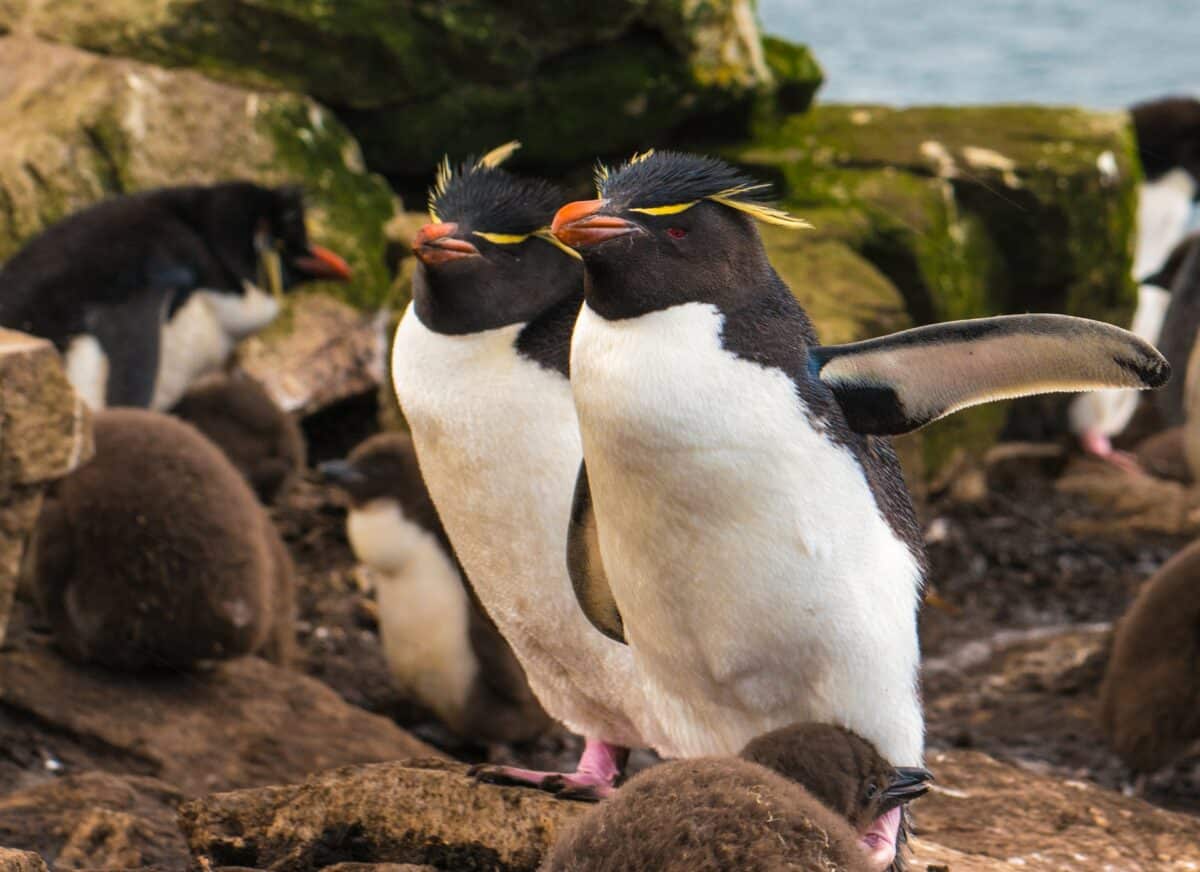
They are vulnerable, as almost all colonies are under threat from human settlement, but huge conservation efforts are being made to protect these little ones in Chile and Argentina.
#7 The Emperor Penguin (Antarctic)
Emperor penguins (Aptenodytes forsteri) are the largest and tallest of all the penguins, and call the shores of Antarctica home.
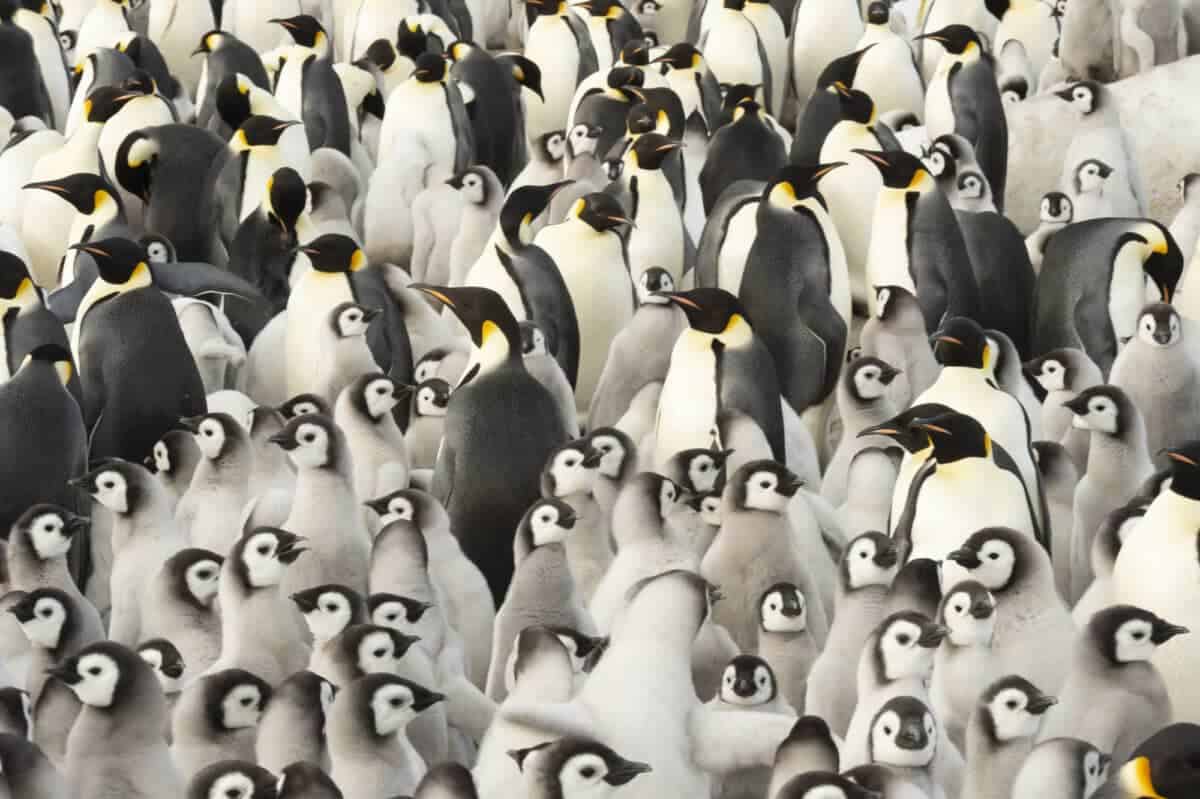
These penguins nest almost exclusively on Antarctic sea ice, making them the only bird species that never sets foot on land. The emperor penguin is the tallest and heaviest of all living penguin species and is endemic to Antarctica.
#8 The Galápagos Penguin (South America Galapagos Islands- Brazil)
Galápagos penguins (Spheniscus mendiculus) are the northernmost species of penguin, living on the equatorial Galápagos archipelago.
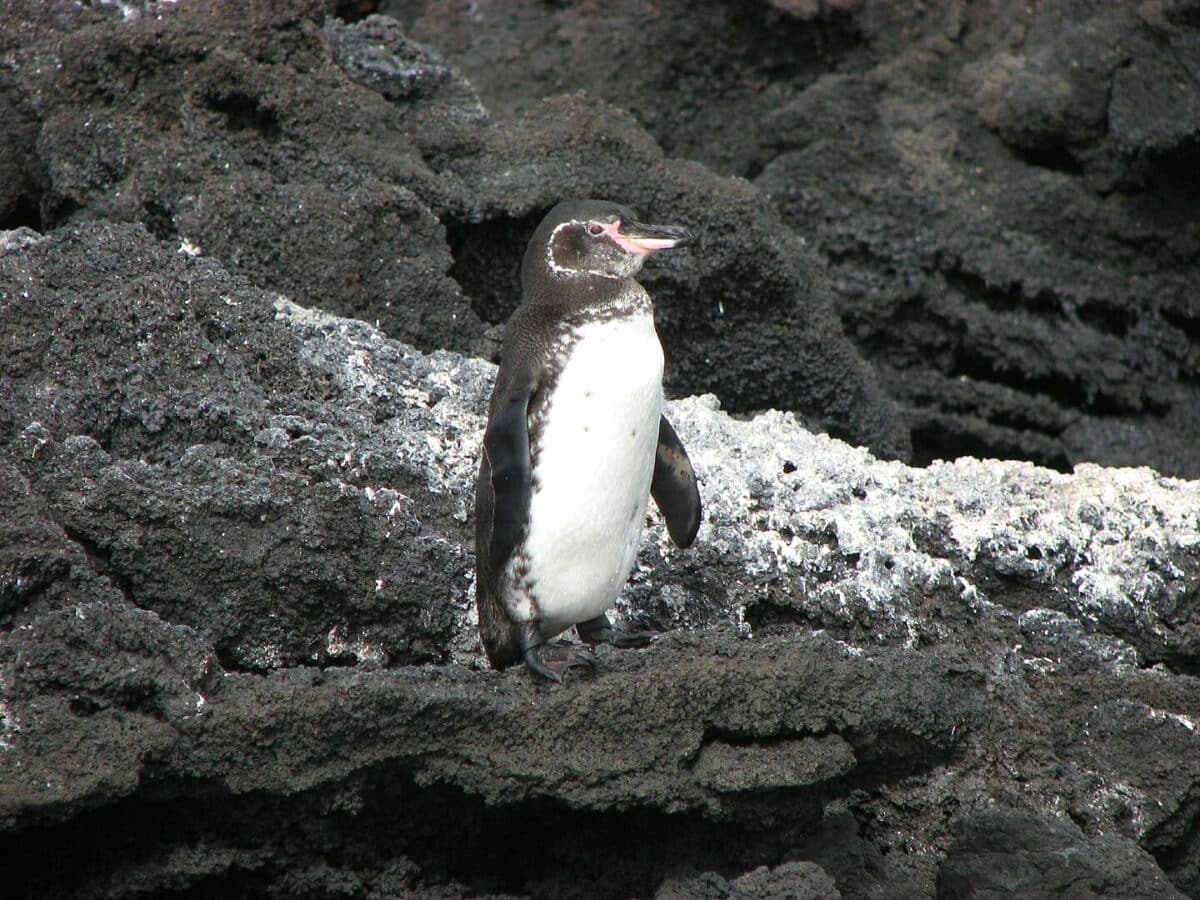
They are a banded penguin, closely related to the African penguin, but far smaller. Their small size allows them to subsist entirely on small coastal minnows and shellfish, avoiding deep-water predators.
#9 Southern Rockhopper Penguin (Falkland Islands)
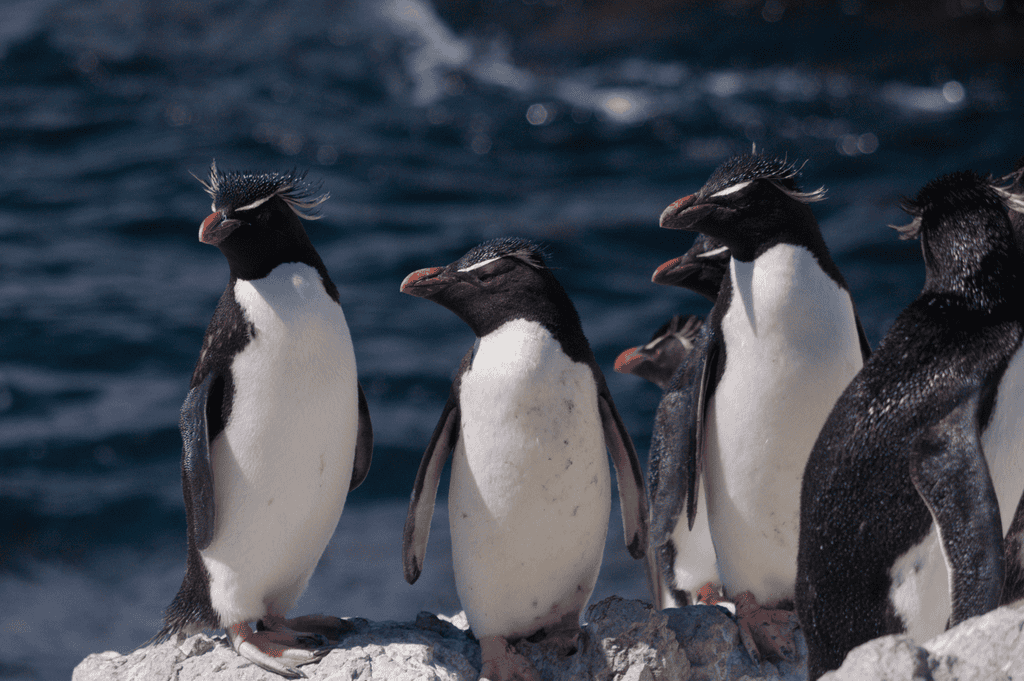
Southern rockhopper penguins (Eudyptes chrysocome chrysocome) call the Falkland Islands home. They look very similar to other rockhoppers, but do not have the usual patch of pale skin below their beaks, and a few black feathers in their crests. They are cute, but their birdsong is very rough and they are probably the least musical penguin.
#10 Eastern Rockhopper Penguin (Sub-Antarctic)
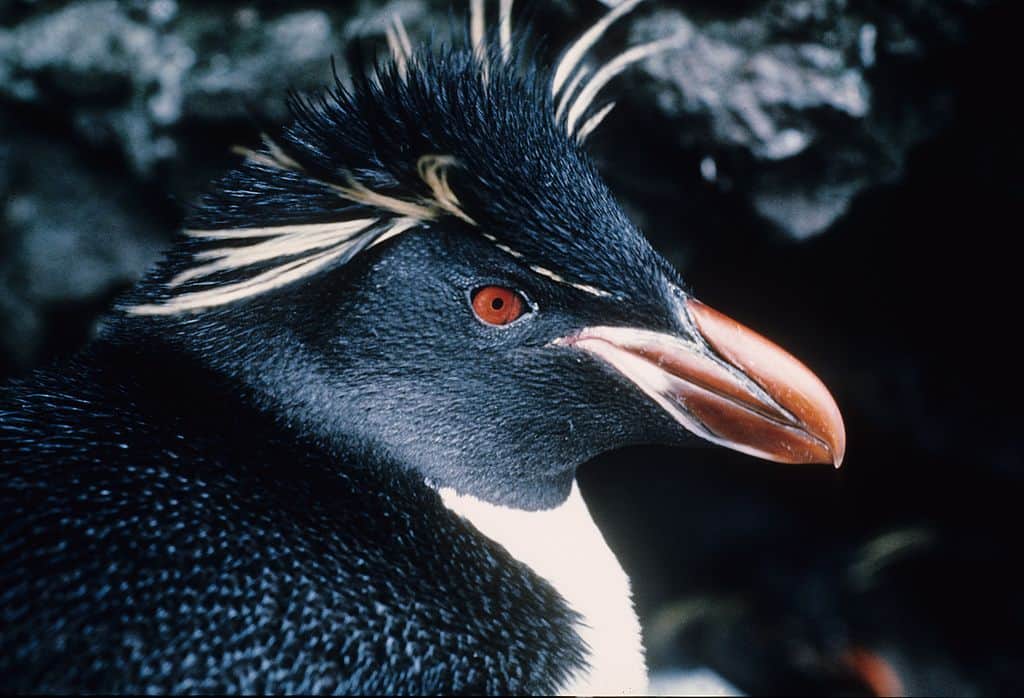
Eastern rockhopper penguins (Eudyptes chrysocome filholi) are very closely related to southern rockhoppers – in fact they can only be differentiated by their DNA and their unique birdsongs. These cryptic penguins inhabit several sub-Antarctic islands in the Indian and Pacific Oceans.
#11 Chinstrap Penguin (Antarctic)
Chinstrap penguins (Pygoscelis antarcticus) call the shores of Antarctica and several Pacific and Southern Ocean islands home.
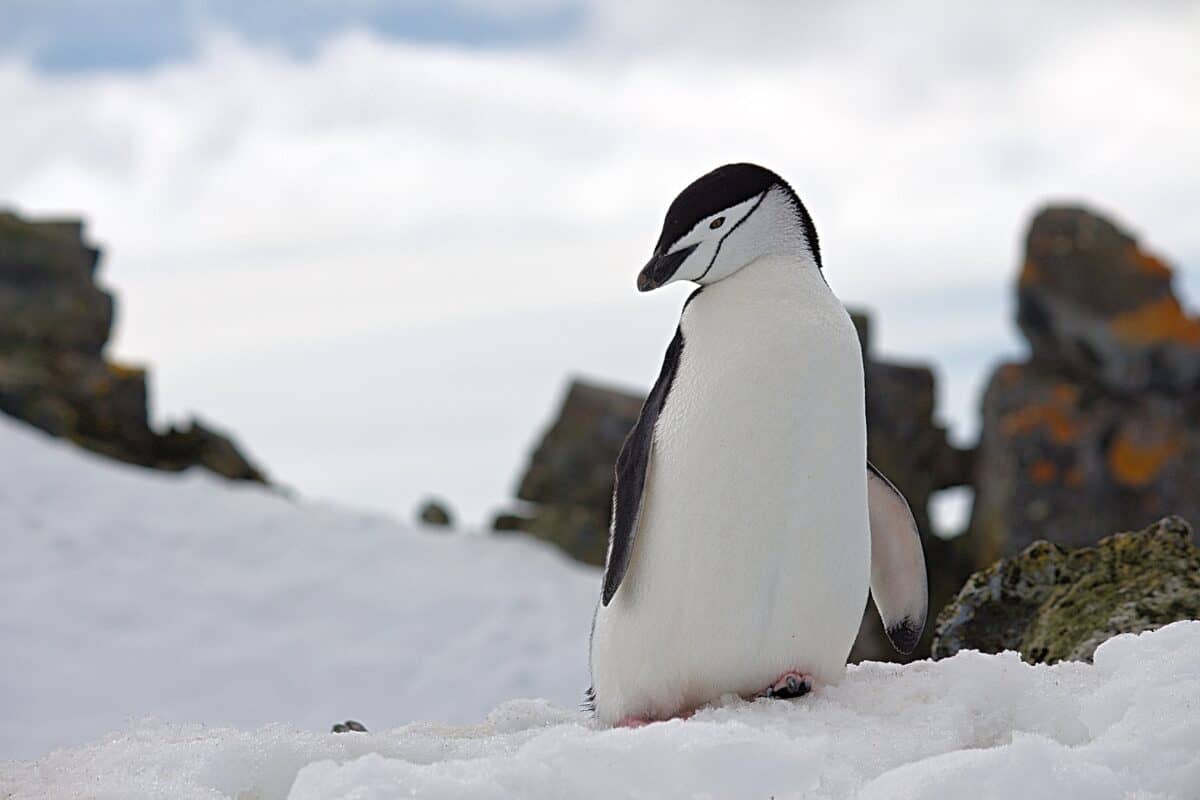
Not only do chinstrap penguins look like they are wearing little army helmets all the time, but they are the most common penguin on Antarctica – with almost 13 million individuals.
#12 Gentoo (Sub-Antarctic Islands)
Gentoo penguins (Pygoscelis papua papua) are larger than their Antarctic counterpart, even though those are the ones you most likely recognise from photos.
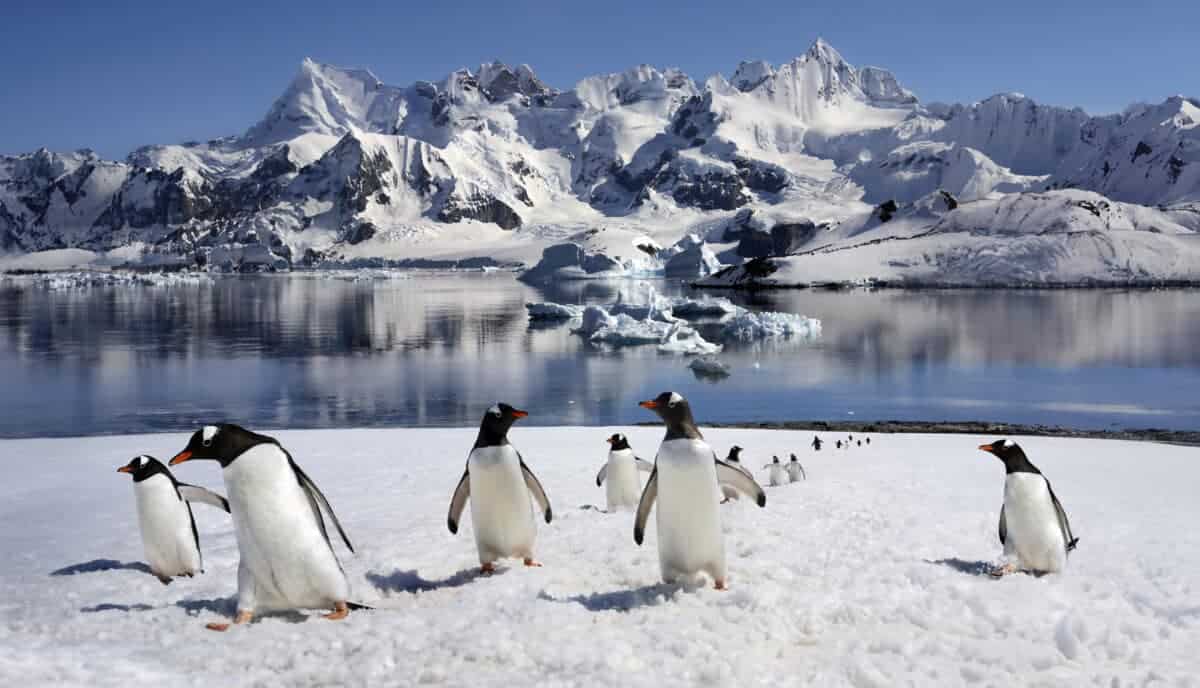
The subantarctic gentoos inhabit islands in the southern Indian and Atlantic Oceans, such as Marion Island.
Where to see penguins
We have found the top places that will guarantee penguin sightings and where possible, encounters.
Africa
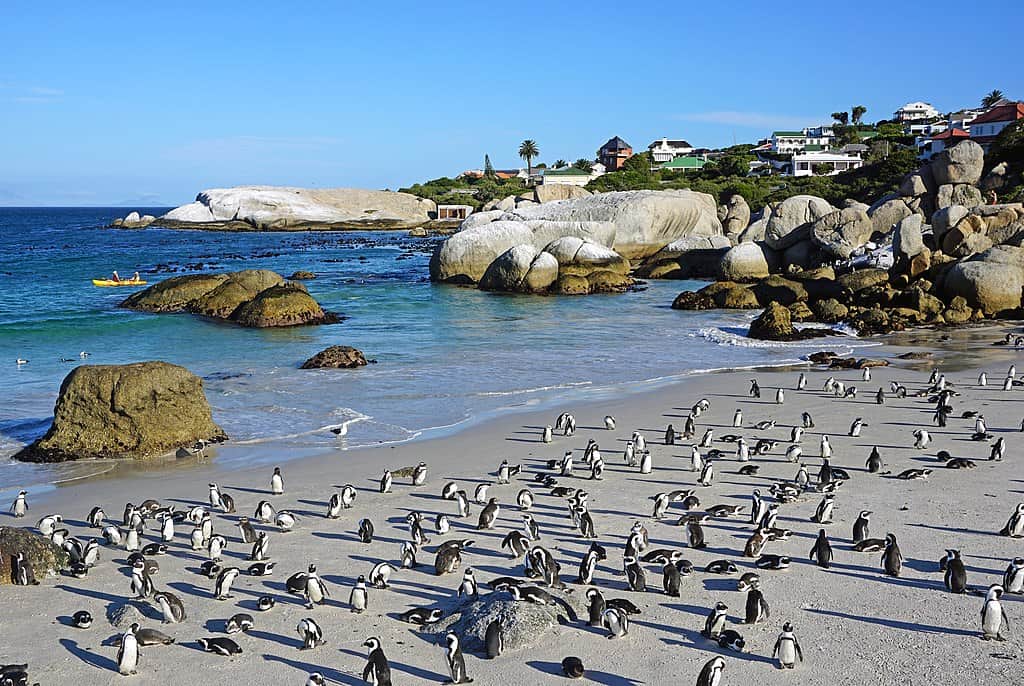
Colonies can be found from southern Namibia all the way around the South African coast to Port Elizabeth, but few places offer as remarkable a viewing point as Boulders Beach.
- Boulders Beach Cape town
- Stoney Point Betty’s Bay
- Dyer Island Gaansbaai
- St Francis Bay
- St Croix Island Port Elizabeth
- Robben Island Table bay
- Namibia Halifax Island
Tour Operators
- City Sight Seeing South Africa – Hop on Hop off Bus Cape Town
Australia & New Zealand
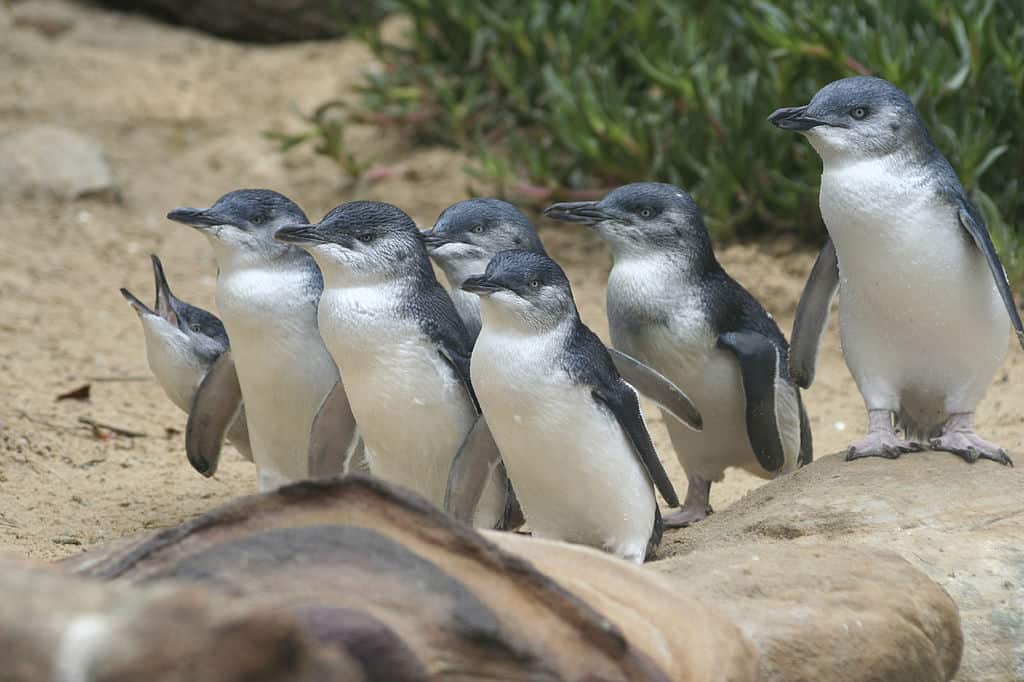
5 Places in Australia to See Penguins
- 1. SEA LIFE Sydney, New South Wales.
- 2 Phillip Island, Victoria.
- 3 Penguin Island, Western Australia.
- 4 Lion Island, Broken Bay, New South Wales.
- 5 Shore Beach, Manly, New South Wales.
Operators
New Zealand
- Stewart Island. This is one of the best places to see most of New Zealand’s rare and endemic birds.
- Munro Beach. Fiordland crested penguin.
- Oamaru. Little blue penguins are so important to the locals at Oamaru they built an underpass to help them safely navigate a busy road.
- The Catlins.
- Otago Peninsula.
- Banks Peninsula.
Operators
South America – Galápagos
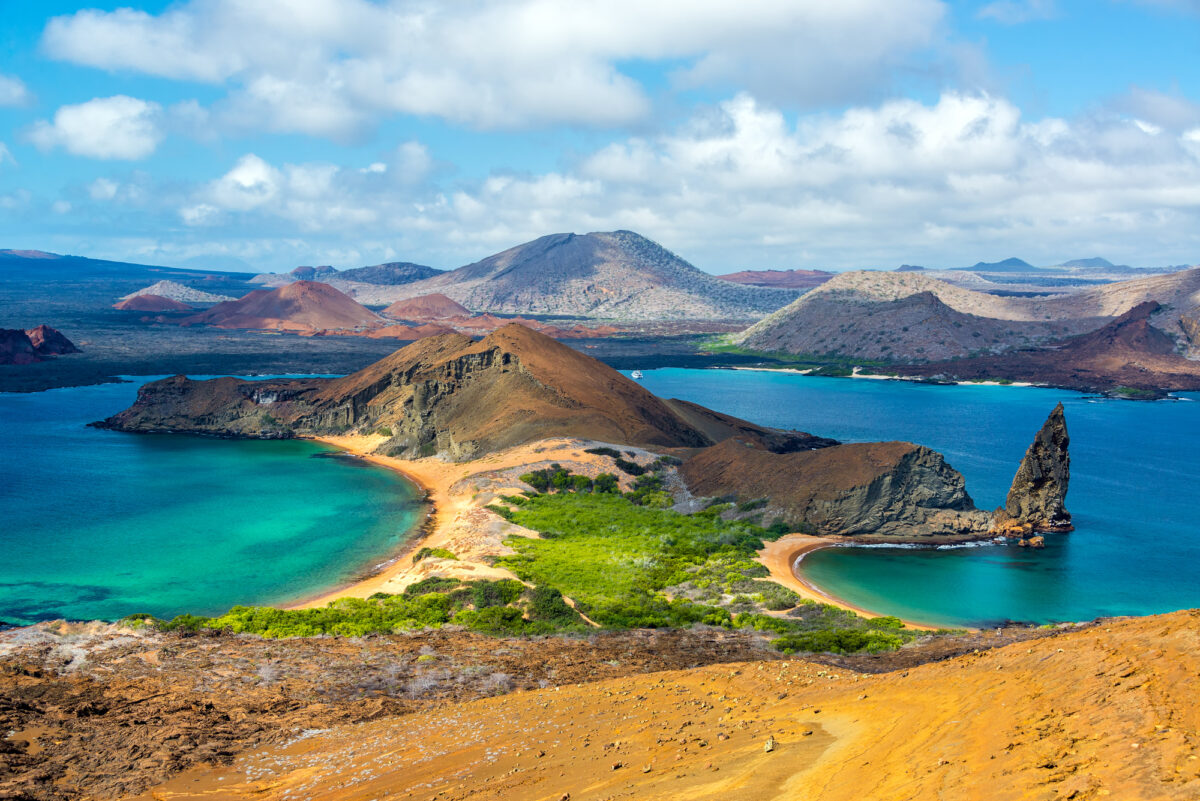
The northernmost penguins on the continent reside in the Galapagos Islands which lie off the coast of Ecuador. South America’s most famous species is the Humboldt penguins, which live along the coasts of Peru and Chile.
Most of the penguins in Galapagos are found on the western islands of Isabela and Fernandina, where they can be seen sunning themselves on rocky shores and swimming. They can be found on other islands as well, including Santiago, Bartholomew, and Floreana. Bartholomew is a good place to see them, because they are often seen near the disembarkation point for the short hike to the top of the hill, and a small colony at the excellent snorkeling spot at the base of Pinnacle Rock.
Operators
Where to see penguins in Antarctica
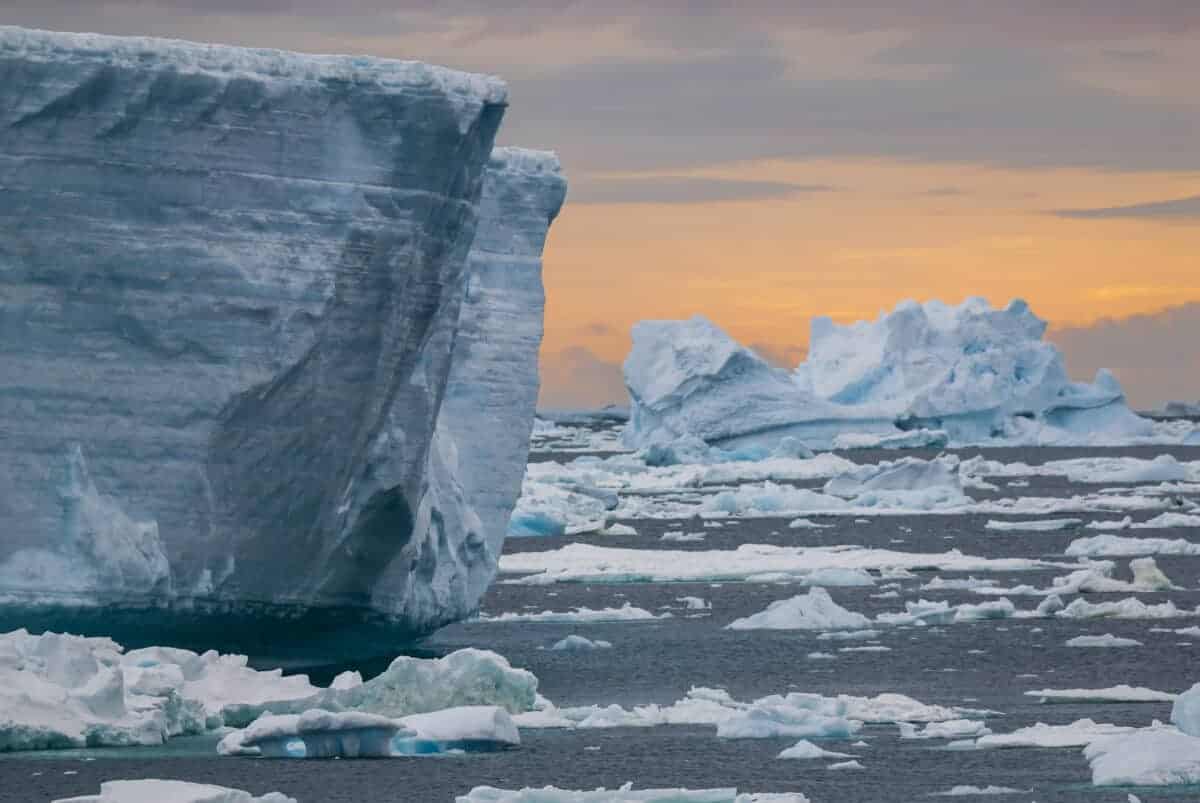
Penguin Types: Emperor, Adelie, Gentoo and Macaroni Penguins.
Best places to see penguins in Antarctica
- South Georgia. Discover incredible wildlife and landscapes with tours to South Georgia.
- The Falkland Islands. Explore the stunning beauty of Falklands on our tours.
- Snow Hill Island.
- Ross Sea Ice Shelf.
- South Orkney Archipelago.
- Antarctic Peninsula.
Operators
Conservation & Donation
“From polar bears in the Arctic to penguins in Antarctic, climate change is having a devastating impact on animals around the world.”
Dr. Sybille Klenzendorf WWF’s Managing Director of Species Conservation
Conservation Aid for Antarctic region Penguins: WWF Donate & Adopt
Aid for African Penguins: SANCOBB
Aid for little penguins of Phillip Island: Penguin Foundation & Penguin Rescue
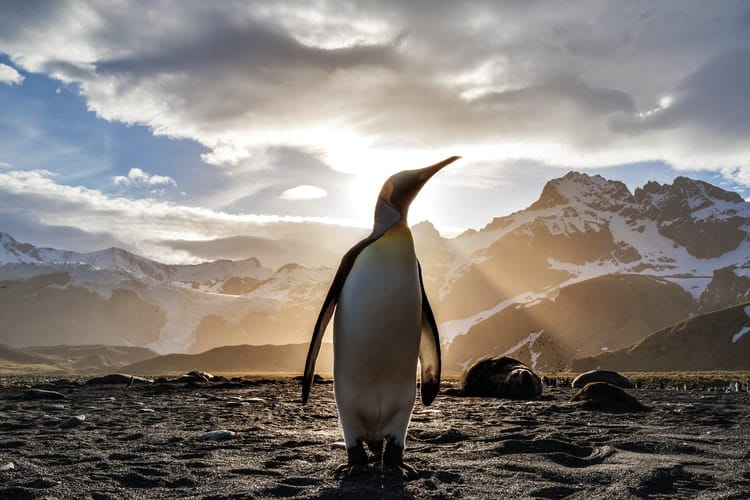
Conclusion
From the Southern most point of Antarctica to the Galapagos islands of Ecuador, the coastlines of southern Africa and the shores of Australia and New Zealand, We have found the best places to view and encounter penguins, providing all the information you need to know on these remarkable birds.
A lover of birds? Take a look at other articles featuring some of the most fascinating birds around the globe.
Join our Forum for free today!

- These are The 5 Largest Great White Sharks Ever Recorded - July 19, 2024
- The Surprising Benefits of Big Game Hunting - July 18, 2024
- $100k+ Hunting Experiences The Most Expensive Animals to Pursue - July 17, 2024

